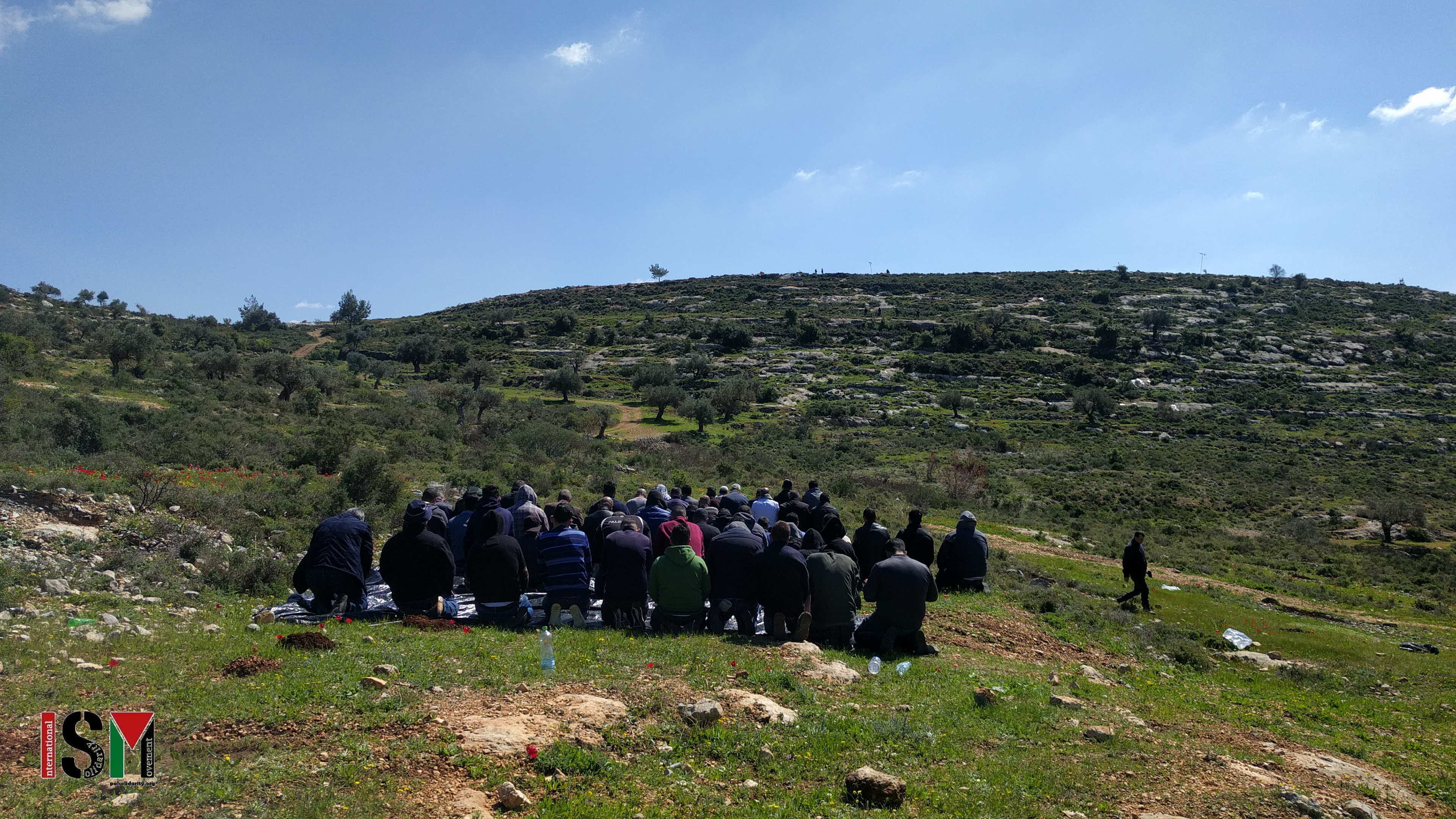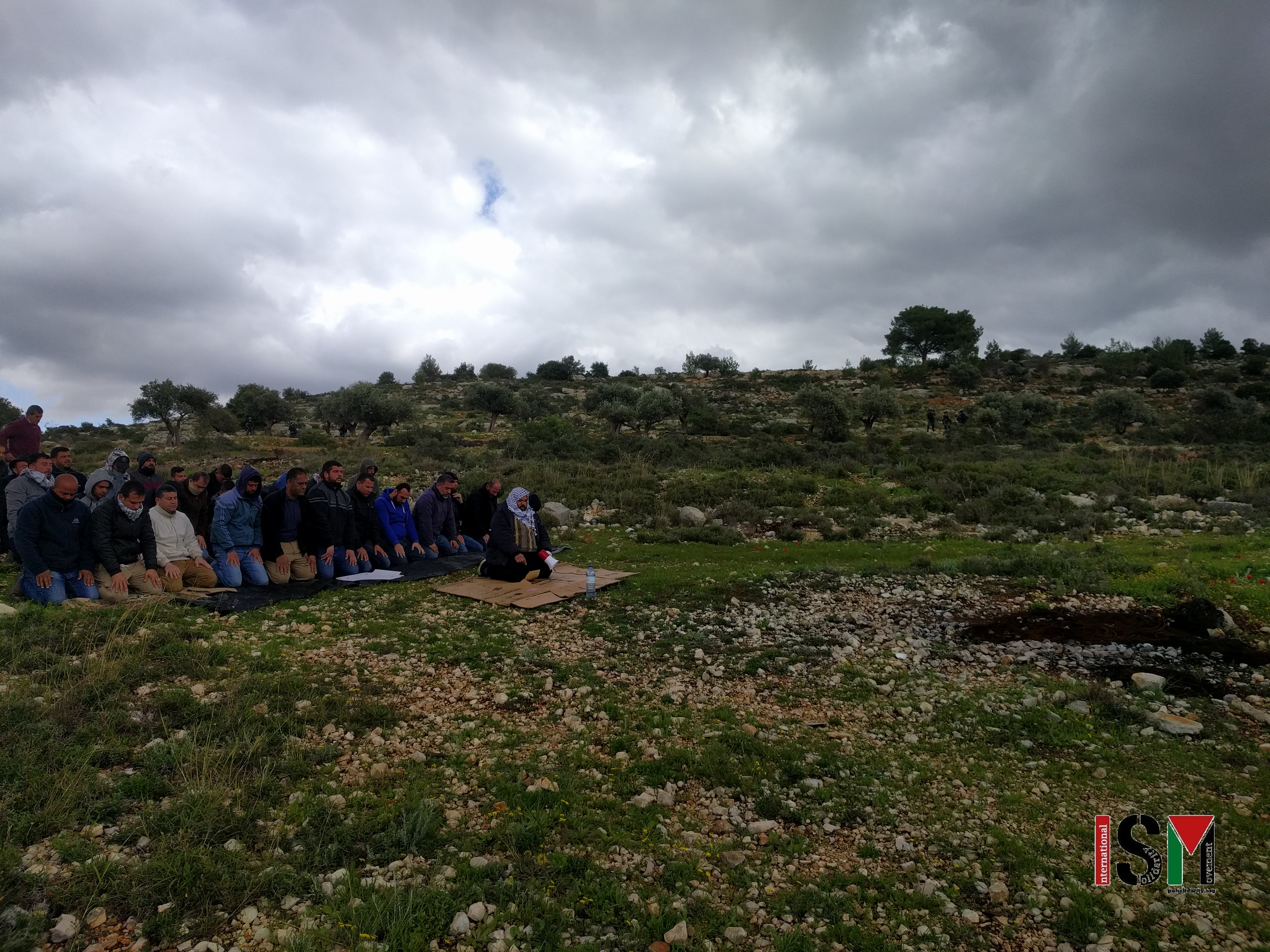Tag: Ras Karkar
-
Prayers end with tear gas in Ras Karkar
March 8, 2019 | International Solidarity Movement, Al-Khalil team | Ras Karkar, occupied Palestine This Friday, the inhabitants of the villages around Mount al-Risan–where an outpost has been established by illegal settlers on Palestinian land–gathered for a day of peaceful protest and prayer. As soon as the religious ritual ended, the military ritual began. Before…
-
Palestinians in prayer shot with rubber-coated steel bullets, tear gas.
March 01, 2019 | International Solidarity Movement, Al-Khalil team | Ramallah, occupied Palestine Non-violent peaceful protesters met with tear gas and rubber-coated steel bullets in Ras Karkar. In 2018, settlers invaded land atop al-Risan Mountain, which overlooks the three villages Ras Karkar, Kafr Ni’ma and Kharbatha Bani Harith. Since then local Palestinians have gathered in…
-
Another interesting week in sunny Palestine
January 2019 | International Solidarity Movement, Al-Khalil team | Hebron, occupied Palestine Al Khalil (Hebron), occupied West Bank, Palestine, late January 2019 It’s the first day of winter term for Palestinian schoolkids. Israeli settlers from the colonies in and around Al Khalil, the Israeli Border Police, and the Israeli Defense Force, are all known for…



